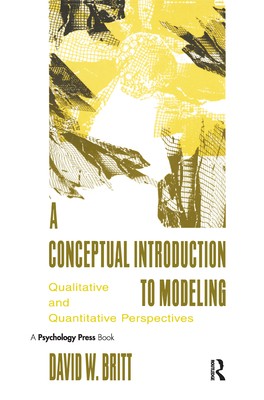
- We will send in 10–14 business days.
- Author: David W Britt
- Publisher: Psychology Press
- ISBN-10: 0805819371
- ISBN-13: 9780805819373
- Format: 15.2 x 22.9 x 1.4 cm, kieti viršeliai
- Language: English
- SAVE -10% with code: EXTRA
Reviews
Description
When seeking to test specific hypotheses in large data sets, social and behavioral scientists often construct models. Although useful in such situations, many phenomena of interest do not occur in large samples and do not lend themselves to precise measurement. In addition, a focus on hypothesis testing can constrict the potential use of models as organizing devices for emerging patterns -- summaries of what we believe we know about the dynamics of situation.
This book bridges the gap between "quantitative" and "qualitative" modelers to reconcile the need to impose rigor and to understand the influence of context. Although there are many different uses for models, there is also the realistic possibility of doing credible research without their use. A critical reexamination of the assumptions used in quantitatively-oriented models, however, suggests ways to increase their effectiveness as organizers of both quantitative and qualitative data. Students of methods in psychology, sociology, education, management, social work, and public health -- and their instructors -- are increasingly expected to become familiar with both quantitative and qualitative approaches. Unfortunately, they find few vehicles for communication regarding the implications of overlapping work between the two approaches. Using models as organizing devices for a better dialogue between assumptions and data might facilitate this communication process.EXTRA 10 % discount with code: EXTRA
The promotion ends in 23d.20:57:39
The discount code is valid when purchasing from 10 €. Discounts do not stack.
- Author: David W Britt
- Publisher: Psychology Press
- ISBN-10: 0805819371
- ISBN-13: 9780805819373
- Format: 15.2 x 22.9 x 1.4 cm, kieti viršeliai
- Language: English English
When seeking to test specific hypotheses in large data sets, social and behavioral scientists often construct models. Although useful in such situations, many phenomena of interest do not occur in large samples and do not lend themselves to precise measurement. In addition, a focus on hypothesis testing can constrict the potential use of models as organizing devices for emerging patterns -- summaries of what we believe we know about the dynamics of situation.
This book bridges the gap between "quantitative" and "qualitative" modelers to reconcile the need to impose rigor and to understand the influence of context. Although there are many different uses for models, there is also the realistic possibility of doing credible research without their use. A critical reexamination of the assumptions used in quantitatively-oriented models, however, suggests ways to increase their effectiveness as organizers of both quantitative and qualitative data. Students of methods in psychology, sociology, education, management, social work, and public health -- and their instructors -- are increasingly expected to become familiar with both quantitative and qualitative approaches. Unfortunately, they find few vehicles for communication regarding the implications of overlapping work between the two approaches. Using models as organizing devices for a better dialogue between assumptions and data might facilitate this communication process.

Reviews